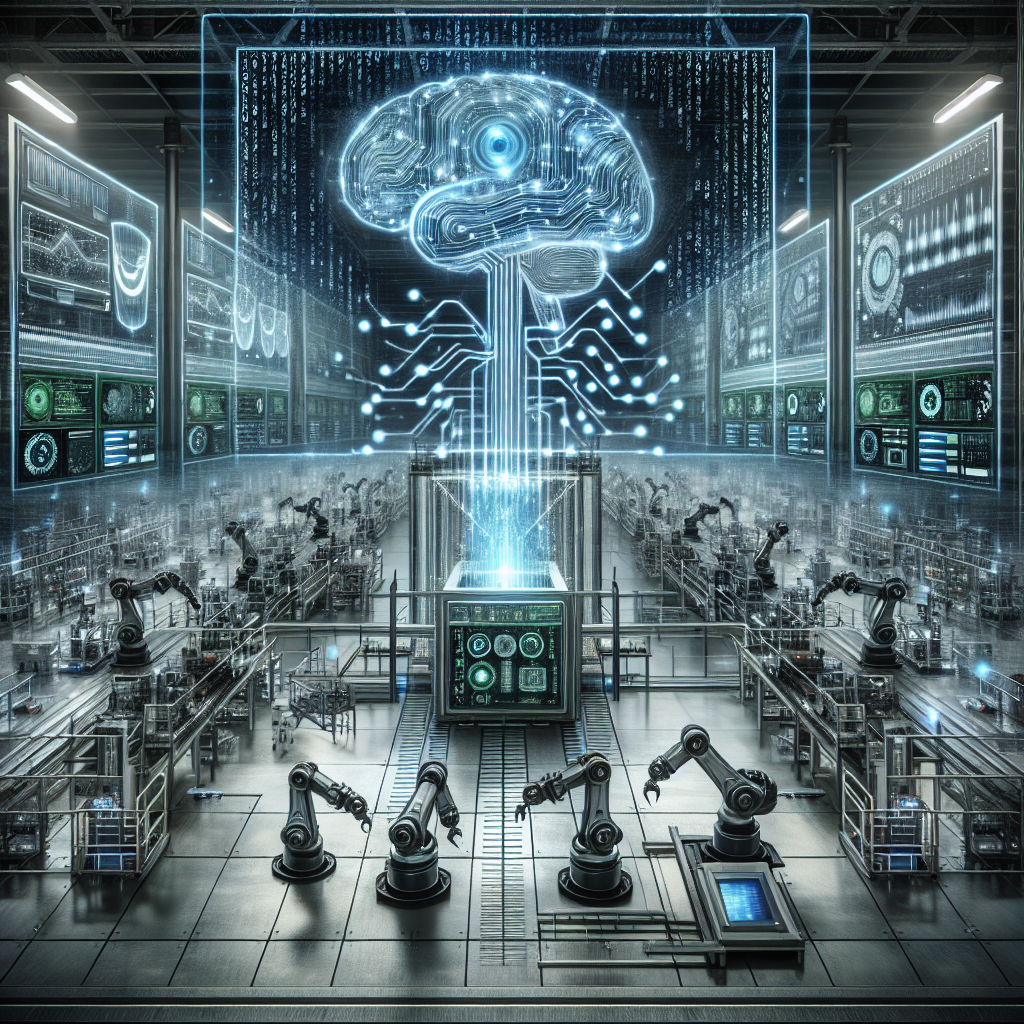In recent years, the manufacturing industry has been revolutionized by the integration of artificial intelligence (AI) and remote monitoring technologies. These advancements have enabled manufacturers to streamline their operations, improve efficiency, and enhance overall productivity. In this article, we will explore the benefits of AI and remote monitoring in manufacturing, as well as address common questions and concerns surrounding these technologies.
Benefits of AI and Remote Monitoring in Manufacturing:
1. Improved Efficiency: AI-powered algorithms can analyze vast amounts of data in real-time, allowing manufacturers to identify inefficiencies and optimize their production processes. Remote monitoring technologies enable manufacturers to remotely monitor their equipment and assets, reducing downtime and increasing overall efficiency.
2. Predictive Maintenance: AI can predict when equipment is likely to fail based on data analysis, allowing manufacturers to schedule maintenance before a breakdown occurs. Remote monitoring technologies can also provide real-time alerts and notifications when equipment is not performing optimally, enabling manufacturers to address issues before they escalate.
3. Cost Savings: By implementing AI and remote monitoring technologies, manufacturers can reduce maintenance costs, minimize downtime, and improve overall operational efficiency. These cost savings can have a significant impact on the bottom line of manufacturing companies.
4. Enhanced Safety: Remote monitoring technologies can provide real-time visibility into manufacturing operations, allowing manufacturers to identify potential safety hazards and take proactive measures to mitigate risks. AI-powered algorithms can also analyze safety data to identify patterns and trends that can help improve workplace safety.
5. Data-driven Decision Making: AI and remote monitoring technologies provide manufacturers with valuable insights and data that can be used to make informed decisions. By leveraging this data, manufacturers can optimize their production processes, improve product quality, and enhance overall performance.
Frequently Asked Questions about AI and Remote Monitoring in Manufacturing:
Q: What is the difference between AI and remote monitoring technologies in manufacturing?
A: AI refers to the use of algorithms and machine learning techniques to analyze data and make predictions, while remote monitoring technologies enable manufacturers to monitor equipment and assets remotely. AI can be used to analyze data collected through remote monitoring technologies to optimize production processes and improve efficiency.
Q: How can manufacturers implement AI and remote monitoring technologies in their operations?
A: Manufacturers can implement AI and remote monitoring technologies by investing in sensors and monitoring devices that can collect data from equipment and assets. This data can then be analyzed using AI algorithms to optimize production processes and improve efficiency.
Q: Are there any security concerns associated with remote monitoring technologies in manufacturing?
A: Security is a critical concern when implementing remote monitoring technologies in manufacturing. Manufacturers should ensure that their networks are secure and that data is encrypted to prevent unauthorized access. Additionally, manufacturers should implement cybersecurity measures to protect sensitive data and prevent cyberattacks.
Q: How can AI and remote monitoring technologies help manufacturers improve product quality?
A: AI can analyze data from sensors and monitoring devices to identify patterns and trends that can help manufacturers improve product quality. By monitoring equipment and assets remotely, manufacturers can ensure that production processes are optimized to meet quality standards.
Q: What are the potential challenges associated with implementing AI and remote monitoring technologies in manufacturing?
A: Some potential challenges associated with implementing AI and remote monitoring technologies in manufacturing include the initial cost of investment, the need for specialized expertise to implement and maintain these technologies, and potential resistance from employees to adopt new technologies.
In conclusion, AI and remote monitoring technologies have the potential to revolutionize the manufacturing industry by improving efficiency, reducing costs, enhancing safety, and enabling data-driven decision-making. By leveraging these technologies, manufacturers can optimize their production processes, improve product quality, and gain a competitive edge in the market. As with any new technology, there are challenges and concerns that need to be addressed, but the benefits of AI and remote monitoring in manufacturing are undeniable.

